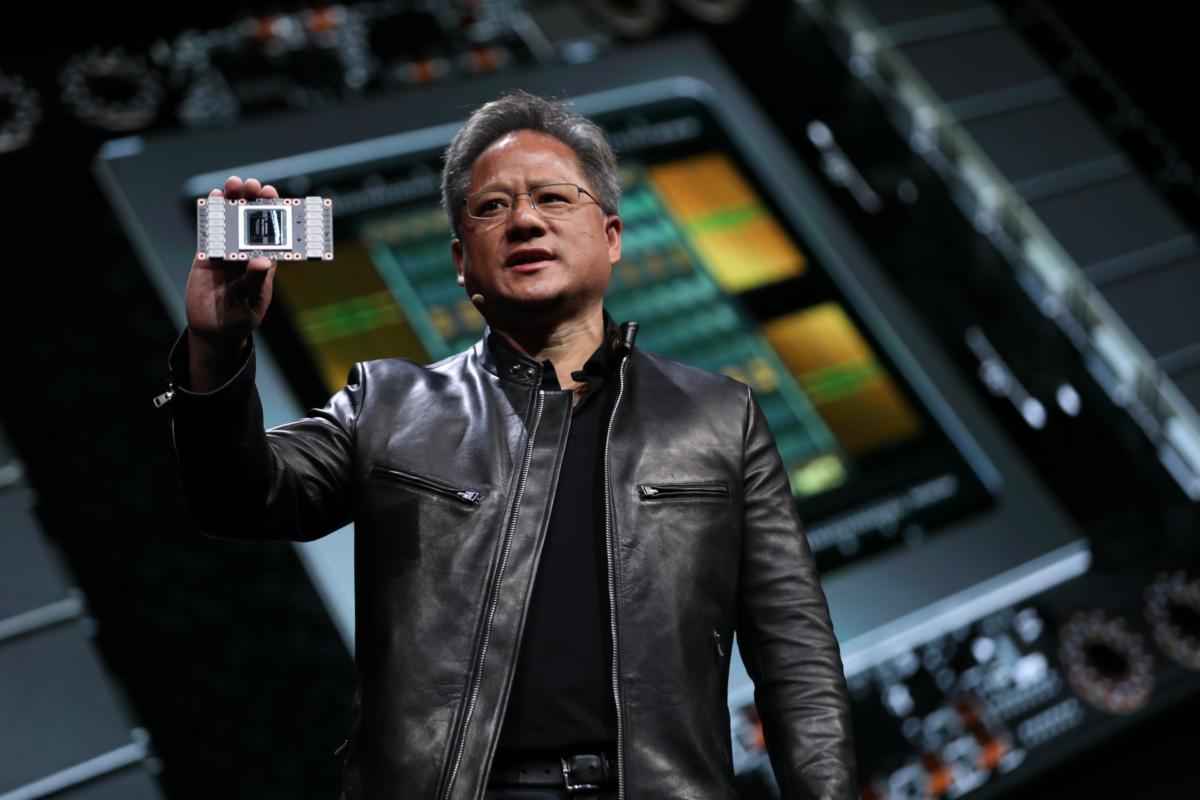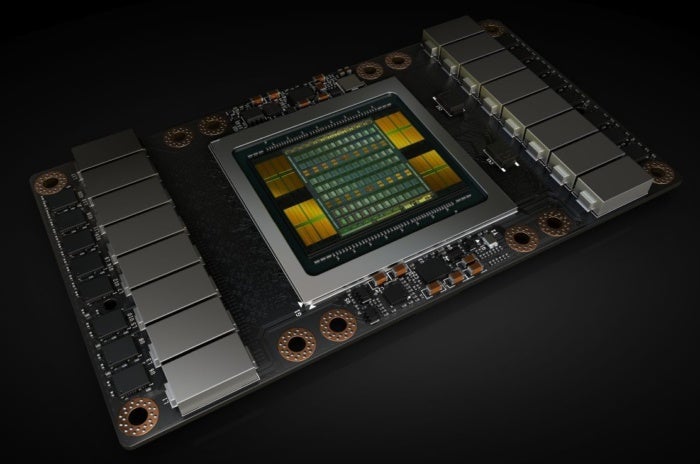

Nvidia just revealed the most powerful graphics processor in the world yet again. The next-generation “Volta” graphics architecture made its debut at the annual GPU Technology Conference on Wednesday, jumping off Nvidia’s roadmap and into the real world.
But what does that mean for you, a humble PC gamer? Here are five key things you need to know about Nvidia’s Volta GPU.
1. It’s not for you, yet
If you’re looking for hot details about the future of GeForce graphics cards, well, keep waiting. Like the Pascal GPU architecture before it, Volta’s big reveal comes in the form of a monstrous Tesla V100 GPU built for data centers. CEO Jen-Hsun Huang focused on the hardware’s AI chops and announced a new $149,000 DGX-1 deep learning system with eight of the Volta processors inside. Big spenders get first crack, it seems.
That said, the details Nvidia released about Volta hint at what we might expect from the inevitable next-gen GeForce cards.
2. Volta beats the pants off Pascal
The Tesla V100 rocks 21 billion transistors and 5,120 CUDA cores running at 1,455MHz. That downright dwarfs Pascal’s flagship data center GPU, the Tesla P100, which packs 15 billion transistors and 3,840 CUDA cores running at a slightly faster 1,480MHz maximum clock speed.

Nvidia
It’s impossible to know what GeForce graphics cards based on Volta will look like, but the recently released Titan Xp wound up with a full-blown implementation of the Tesla P100’s Pascal GPU, and it’s the fastest gaming GPU in the world. Heck, the GeForce GTX 1080 Ti sports a slightly nerfed version with 3,584 CUDA cores and it can still game at 4K resolution without breaking a sweat.
[Source”cnbc”]





